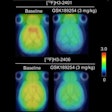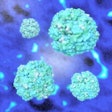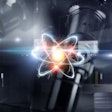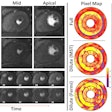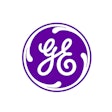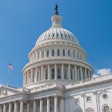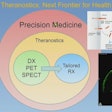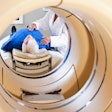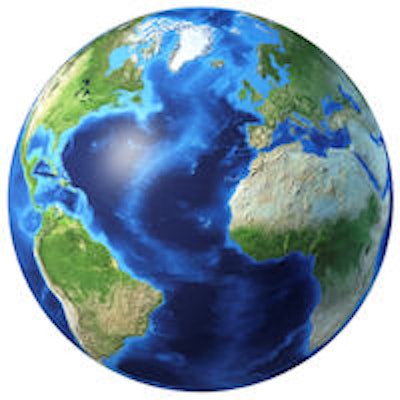
While there are guidelines for recommended radiopharmaceutical doses for pediatric nuclear medicine patients, there is still wide variability around the world in terms of how those standards are followed, according to a new report published online March 31 in the Journal of Nuclear Medicine.
Nuclear medicine practices located in regions with such recommendations for certain procedures, such as North American, Europe, and Japan, tend to closely comply with those guidelines, "although some wide variations still exist," concluded the Nuclear Medicine Global Initiative.
That lack of compliance, even in a few cases, can lead to the risk of a potential adverse event from ionizing radiation at certain dose levels.
Previous surveys have found that nuclear medicine practitioners who know about standards for dose administration tend to follow them "reasonably consistently," said lead author Fred Fahey, DSc, director of physics in nuclear medicine and molecular imaging at Boston Children's Hospital.
"But many people don't know the standards exist," he told AuntMinnie.com. "If we can get the other developing countries and nuclear medicine practitioners in those countries to be aware of these guidelines, then I think we have a chance to make sure the right dose is being used at the right time."
Worldwide initiative
The Nuclear Medicine Global Initiative began four years ago through a collaboration of 13 international organizations directly involved in nuclear medicine.
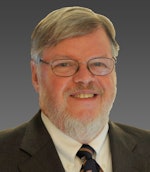 Frederic Fahey, DSc, from Boston Children's Hospital.
Frederic Fahey, DSc, from Boston Children's Hospital.The goals of the initiative were to "promote human health by advancing the field of nuclear medicine and molecular imaging, encourage global collaboration in education, and harmonize procedure guidelines and other policies that ultimately lead to improvements in quality and safety in the field throughout the world" (JNM, March 31, 2016).
The first of two papers aimed at those objectives was published a year ago.
"In that report, we covered the value of pediatric nuclear medicine, some of the issues involved in calculating radiation dosimetry in children, the difference in radiation risk in children compared to adults, and gaps in knowledge in both areas," Fahey recalled.
Currently, there are four main guidelines on the practice of nuclear medicine in pediatric imaging: The 2010 North American consensus guidelines, the European Association of Nuclear Medicine (EANM) dosage card, the Japanese Society of Nuclear Medicine (JSNM) guidelines, and the U.K. Administration of Radioactive Substances Advisory Committee notes for guidance. All four directives have been revised and updated as recently as 2014.
Survey queries
The survey detailed in the current paper took place over approximately four weeks during July and August 2014, with 313 useable responses from 29 different countries. The five countries with the most returns were Japan (98 replies, 31%), Australia (46, 15%), China (33, 10%), Italy (21, 7%), and the U.S. (19, 6%).
There were 291 respondents (93%) whose practice included general nuclear medicine (with or without PET/CT or PET), while 22 respondents (7%) had PET/CT or PET only with no general nuclear medicine.
The most common procedure performed on children was a bone scan using the radiopharmaceutical technetium-99m (Tc-99m) and methylene diphosphonate (MDP), with 159 responses (21%). This was followed by renograms with Tc-99m, with 148 replies (20%), and renal scarring and differential function imaging using Tc-99m dimercaptosuccinic acid (DMSA), with 137 responses (18%).
To help assess variations in standards compliance, the survey asked nuclear medicine practitioners how they would approach two hypothetical patients for those three procedures, as well as a torso scan using FDG-PET.
One hypothetical patient was a 5-year-old boy who weighed 44 lb and was 43 inches tall. The other patient was a 10-year-old girl who weighed 66 lb and was 55 inches tall.
Standards compliance
For bone scans with Tc-99m, 93% of North American nuclear medicine practitioners stayed within 20% of the recommended dose of the radiopharmaceutical for both fictitious patients. Meanwhile, European practitioners had approximately 70% compliance within 20% and Japanese sites had 64% compliance.
For the renogram with Tc-99m, 81% of Europeans were in the 20% range of dose compliance for the boy, but only 57% were for the girl. The Japanese were the most consistent, ranging from 80% for the boy to 77% for girl, while only 50% of North American practices were within the 20% compliance for both patients.
Regarding the Tc-99m DMSA renal scan, in North America, 85% of practices were within the 20% range for the girl and 71% were for the boy. Japanese practices ranged from 75% for the boy to 71% for the girl. Europe was considerably less compliant, as practices were within the 20% dose range only 39% of the time for the boy and 35% for the girl.
For the FDG-PET torso scan, North Americans again did well: 82% were within the 20% range for the boy and 70% were for the girl. This was followed by Japan at 76% and 71%, respectively, and Europe at 51% and 57%, respectively.
"The regions like North America, Europe, and Japan, which have standards, tended to have most of their groups consistent with the standard," Fahey said. "There were still some outliers on either side of that, particularly in Europe. The European Association [of Nuclear Medicine] is a rather diverse organization, with countries in Eastern Europe, so there is variability in practices."
Interestingly, the greatest overall variance in compliance between the two patient scenarios and four procedures was in Australia/New Zealand, especially for the renogram with Tc-99m -- one practice proposed more than four times the recommended dose of Tc-99m for the boy and the girl.
Asia and Latin America also showed a wide range of approaches, with prescribed doses of Tc-99m or FDG mostly well below the standards.
"South Africa was very consistent and clearly followed the European guidelines, even if it were de facto," Fahey added. "We would like to see that from other regions."
Study recommendations
Based on all of the data and survey results, the authors recommended that countries with no pediatric dose compliance standards "either develop their own or adopt one of the existing standards," Fahey said. "Those areas that do have standards should expand their standards to include all procedures practiced in children."
A review of nuclear medicine imaging practices with pediatric patients should also be incorporated into some of the audits that are done by nuclear medicine groups, such as the International Atomic Energy Agency's (IAEA) Quality Management Audits in Nuclear Medicine Practices.
"And pediatric dose recommendations and administered activities should be incorporated into formal training and the curricula for all nuclear medicine professionals," Fahey said.









